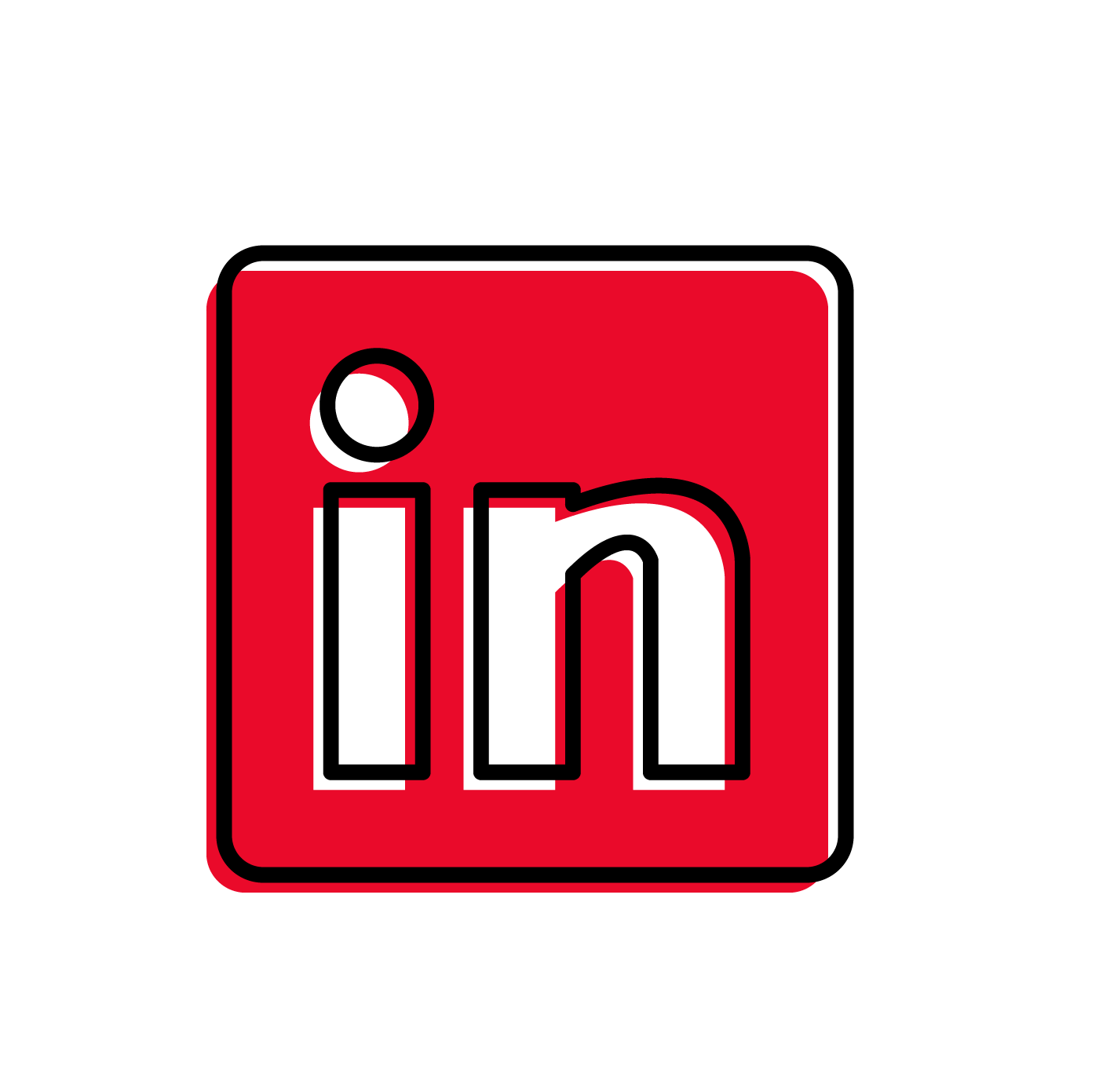At Concentrek, we’re continually working hard to ensure we’re best prepared to help our clients meet their goals. That’s why members of our team traveled to Cleveland to attend Content Marketing World 2019, the world’s largest summit dedicated to the latest trends and technology surrounding content.
During our three-day visit, we attended numerous keynote speakers, breakout sessions and exhibitor booths—all to gather beneficial information to take our marketing strategies to the next level and truly amaze our audiences.
Read on to discover what we learned and how it can be applied to making your brand’s marketing strategies excel.

Are You Being the Best Brand Storyteller?
Brand storytelling is an intricate conversation between your company and your customers. Recognizing where brands miss the mark—and how they can fix it—will help your company succeed in best showcasing its brand identity and message.
Where Brands Miss the Mark
Is your brand missing the mark? If any of the below sound familiar, your brand may be falling short of its storytelling potential.
- Are you focused on your visual identity but miss the opportunity to tell your story?
- Do you exclusively focus on yourself when creating brand messaging?
- Does your messaging get confused and mixed across products and services?
- Does collateral feel forced, templated or scripted?
- Is the story just not that interesting?
Fortunately, there are a number of straightforward ways to ensure that your brand no longer misses the mark—and maintains an authentic voice across all marketing efforts.
Becoming a Strong Storyteller
Before launching any storytelling tactics, you need to define your brand narrative. Listen to what your company is already communicating with customers to determine the best story for your overall brand message.
And, throughout the process, there are three moments when marketers can benefit from slowing down:
- Slow down and question what you think you know about your customers. What does your audience need or crave from you that they’ll miss if you go away?
- Slow down the experience. Are you taking the time to make sure the experience is worthwhile for your customers?
- Slow down to build the relationship. The most efficient isn’t always the most effective.
Now, you can start building your storytelling tactics. Storytelling should be built with a three-act structure that creates the framework for your brand’s story:
- Set the stage: Explain who you are
- Show the journey: Explain your purpose and what you’re doing
- Explain the impact: Explain how this has impacted your brand and its work
Through your messaging, you’ll want to build both trust and affinity with your customers. Trust lets your customer know that you understand their problems. Affinity means that your customers actually like you. It’s important that you’re building both in everything you do.
And, when determining what may work, you should focus on not only data and listening but also your instincts. While metrics and listening tools can help you gain input, you shouldn’t overlook the importance of your instincts in making decisions.
Be Relatable—And Aware of Your Consumers
Being relatable is a content superpower. You should focus your efforts on talking to one person at a time; focusing on a segment doesn’t always make you relatable. The more specific you can be in your messaging, the better.
And instead of focusing on “we need a piece of content for XYZ,” shift to “our audience needs XYZ.” You should become customer obsessed to ensure your marketing shows that you not only understand your customer the best, but you also relate to and like them.
Activating Your Brand’s Story
Ready to activate your own brand’s storytelling?
- Identify the core narrative or themes you are trying to convey to your target audiences.
- Find your stories and storytellers (those who support the narratives).
- Be like a journalist and ask questions—don’t script the story.
- Find the details unique to your brand. Include those.
Remember: Be authentic. If it doesn’t feel like your brand, it isn’t.

Does Psychology Have a Place in Messaging?
Did you know that 95 percent of our purchase decision making takes place in the subconscious mind? Based on that, it’s easy to understand that psychological triggers have a huge impact on how effective your marketing is.
It’s important in marketing to be able to utilize these triggers to help improve the effectiveness of our content efforts.
- Faith in Aesthetics: People will make immediate judgments based on how things appear, and visual appeal can affect the perceived credibility, trust and value of your product or service.
- Request Justification: Leverage the fact that people tend to comply with requests if they are given a relatable reason.
- The Bandwagon Effect: Whether or not consumers intend to, they do follow the actions of others as a model of how they should behave. Especially in unfamiliar situations, consumers will look to others to validate decisions.
- Serial Positioning: Positioning is key in if your audience will remember something. Information at the beginning or end of a list tends to be most memorable. Ensure that the most important details are at the beginning or end to help improve retention.
- Availability Cascade: The more information is repeated, the more likely a consumer is to believe it. Repeat key ideas, phrases and features to help gain trust in those ideas.
- Curiosity: Having partial knowledge encourages consumers to fill the gaps. Too little or too much information can drive away from sales; being right in the middle is the key to gaining interested consumers.
- Labeling: Describe your customers based on how you want them to act, and they’ll be more likely to adapt to align with that.
To get the most out of using psychological triggers, you need to be consistent—and you need to be visible. Make sure you’re regularly utilizing the above triggers in your messaging and branding to help keep your brand top of mind and trusted by target consumers.

Are You a B2B Brand? Make Sure LinkedIn is in the Mix.
If you’re a B2B-focused company, LinkedIn is an imperative platform for distributing your brand messaging. But, you need to start treating your LinkedIn page like a campaign, not a brochure.
Create a Visually Appealing Page
The first step to improving your LinkedIn presence is ensuring your profile is kept up to date and optimized.
- Banner: Don’t keep this stagnant. Be consistently updating your profile banner image to showcase the current messaging. And, make banners for your employees to use on their personal profiles to strengthen the reach of your brand.
- Logos: Once is enough when it comes to your logo. Use it for your profile image, then call it a day.
- Custom Link: Use UTM parameters in your company profile’s custom link to track how many people are actually clicking on it.
- Hashtags: Yes, they’re a thing on LinkedIn now and are used to suggest information to your followers. Be sure to try and include one unique and two popular hashtags in your posts.
Vary Your Content Formats
There are a variety of ways that you can distribute content on LinkedIn. Consistently varying it can keep your audience engaged for the long term.
- Long-Form Posts: You can use up to 700 characters, incorporating hashtags, emojis and @mentions (to other brands and your own brand). Incorporating long-form posts can help vary your content and better engage your audience.
- Native Videos: You should upload videos natively for more visibility. Native video keeps users on LinkedIn—and LinkedIn rewards that.
- Native Documents: You’re able to upload PDFs, Word documents or PowerPoint presentation slides to directly offer valuable resources to your followers.
- Pinning: On LinkedIn, you can pin a select post to the top of your brand’s profile. This helps you showcase the most relevant content directly to your audience. Be sure to change this monthly.
- Content Suggestions: All of the content you post shouldn’t be about your company—or from your company. Use the content suggestions to pull in content from reputable resources, helping position your company as a thought leader.
Employee Advocacy
LinkedIn is a strong platform for integrating employee advocacy. Use your page as a content hub and drive your people there to help increase the reach of content. This can be as simple as sending an email to tell employees about new content and encourage them to like it, comment on it or share it.

How Can Instagram Help Grow Your Business?
Instagram is a treasure trove of information that offers different perspectives from different audiences. And, with location tagging and context with hashtags and captions, it’s a strong way to get in conversations across the platform.
Start by embodying your brand. Know what your customers want to talk about before they talk about it. Perform a deep dive into the latest hashtags and relevant keywords related to your brand to see what others are saying—and get involved yourself. You want to create more than just an interesting image; you want to create a talking piece.
When it comes to publishing content, follow these important guidelines:
- Be transparent in your content. Be authentic.
- Utilize the description portion to illicit comments by adding something like “Know more about this?” or “Comment below!”
- Only use the most relevant hashtags; don’t copy and paste the same ones.
- Find organizations like you. Partner with them and learn from them.
- Never miss a post, and you should post manually if you can.
- Remain active for a certain amount of time around posting so that your audience will be able to expect and even look for you and your content consistently.
- Credit everyone with user-generated content.
And it’s imperative to not forget about the Instagram algorithm. It doesn’t matter if you post consistently or use the best hashtags. You also need to consider:
- How often followers interact with your content—the more often they do, the more likely it is that your content will appear at the top of their feed.
- Whether or not followers interact with similar brands and content.
- The recency of the post, so it’s important to choose a time when the majority of your audience will be active.
One of the biggest takeaways of improving your brand on Instagram is to remember to be your most critical consumer. You want to create the brand that everyone wants to wear the T-shirt of, so if you don’t enjoy your own content, will others? Like many social platforms, your goal on Instagram should be to create a community of like-minded people, not just followers. You want to provide a foundation of content that people know to expect from you.

Are You Properly Supporting Sales Through Marketing?
Marketing and sales differ in their goals, which can create a disconnect in your messaging. While marketing focuses on the buyer’s journey, sales is focused on closing the deal. Recognizing that can help streamline communication and efforts between the two departments.
- Keep your sales team closely aligned with your efforts. Focus on the areas that you can help support your sales team, and specifically make sure you know the types of content salespeople use so that you can provide that value. If you use a sales enablement platform, check and see which content is most downloaded or viewed; this can help guide your understanding of what your salespeople want.
- It’s all about sales. Make an effort to understand your sales’ process so that you can communicate with them and build content to support their process.
- Everything is connected.
- It takes months to find a customer, so work together. Make sure you’re working closely with sales through account-based marketing (ABM). Collaboration between sales and marketing can help drive strategic and personalized marketing outreach and engagement to help close deals.
- Know what else you can bring to the table. Beyond just providing content, marketers can help train sales on products and tools and provide high-quality talking points for sales to use. Messaging and positioning are the most underrated tasks in marketing—bring them to the table for your sales team.
Considering the above in upcoming strategies can help improve the alignment between sales and marketing—improving your internal processes and the effectiveness of your work.

Wrapping It All Up
Take a look at what our team members consider the biggest takeaways from Content Marketing World 2019.

“While there were a number of valuable lessons throughout our sessions, the biggest takeaway I gained from this is to ensure everything that your brand does is authentic. Being able to build genuine trust and respect from your customers helps drive every marketing tactic to success.”
– Allyson Jansen, Director of Content Marketing

“Building trust takes time. Much collaboration is needed between sales and marketing, and we need to get out of this mindset of an overnight win. Building trust also requires content that is tailored for your audience needs.”
– George Mergen, Senior Account Executive

“In my experience at Content Marketing World, I learned that as marketers, our goal is to fully understand and connect with our consumer base. But, it’s vital to remember that at the end of the day, the reason we do what we do is to benefit the consumer. They are the people who should drive us to grow and improve not only in our strategic planning but also in the way we approach marketing as a whole. It’s about creating human connections and a sense of loyalty that goes beyond the seller-buyer relationship.”
– Courtney Steele, Content Marketing Associate

“Attending Content Marketing World 2019 confirmed for me that in a field that is constantly evolving, it is absolutely crucial to stay on top of the latest developments in the areas of content development, brand storytelling, measurement/analytics and social media optimization. It is especially pertinent as more and more brands move into this space to guarantee our clients’ messages break through the noise.”
– Lindsay Gebhart, Content Marketing Associate

"My time at Content Marketing World really helped me better understand what a business is looking for when seeking an agency partner. Bringing that back to Concentrek will help us continually evolve so that we are fully equipped to serve our clients–and successfully support their long-term goals."
– Valerie Lambert, Account Coordinator
Take the Next Step
Ready to work with a team that’s highly experienced in content marketing? Reach out to us today.




